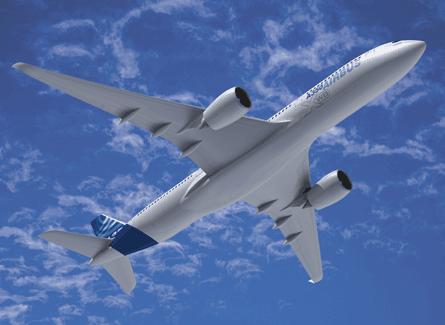Rolls-Royce has drawn up a technology-insertion roadmap aimed at enabling its Trent XWB turbofan to deliver the nominal 92,000lb (409kN) of take-off thrust required by the stretched A350-1000 when it enters service in 2015.
The UK manufacturer plans to introduce a strengthened fan system, and materials and aerodynamic modifications in the core of the -1000's Trent XWB, to ensure that the top-end member of the engine family offers comparable time-on-wing to the variants that will power the baseline A350-900 and -800 "shrink".
The -900 is due to enter service in 2013 equipped with an 83,000lb-thrust engine, followed by the -800 a year later, which will use an identical powerplant de-rated to 74,000lb.
Airbus and Rolls-Royce are expected to tell airline customers at an A350 programme review meeting in Hamburg in early April that these thrust ratings are being revised slightly upwards, following the airframer's recent decision raise maximum take-off weights.
 |
|---|
© Airbus |
"Our basic strategy on this engine is we have a single engine type," says Trent XWB chief engineer Chris Young. "We design it originally for the -900, nominally an 83,000lb-rated engine at the moment, and that engine we absolutely optimise for a 2013 entry-into-service level of technology."
However Rolls-Royce confirms that the 350-seat A350-1000, which will have a maximum take-off weight of 298t, will require a modified engine.
"What we have said is that rather than build a slightly bigger core or slightly bigger fan [to cater for the -1000], we'll optimise it as well as we can for [the -900 in] 2013, then we'll insert new technology for 2015 that will allow us to build the thrust rating up," says Young.
The basic 118in (3m) titanium fan will be retained for the -1000, but the blades and casing will be strengthened to allow for the higher flow rate.
There will also be an increase in the operating temperature capability of the core, taking advantage of new turbine technologies developed through the European Environmentally Friendly Engine (EFE) research programme.
"The technology insertion is really more around recovering your time-on-wing back to the same sort of levels as the 83k engine, by giving you a greater turbine gas temperature margin," says Young.
Core changes will mainly concern turbine blade design, materials, coatings and cooling technology.
Source: Air Transport Intelligence news























